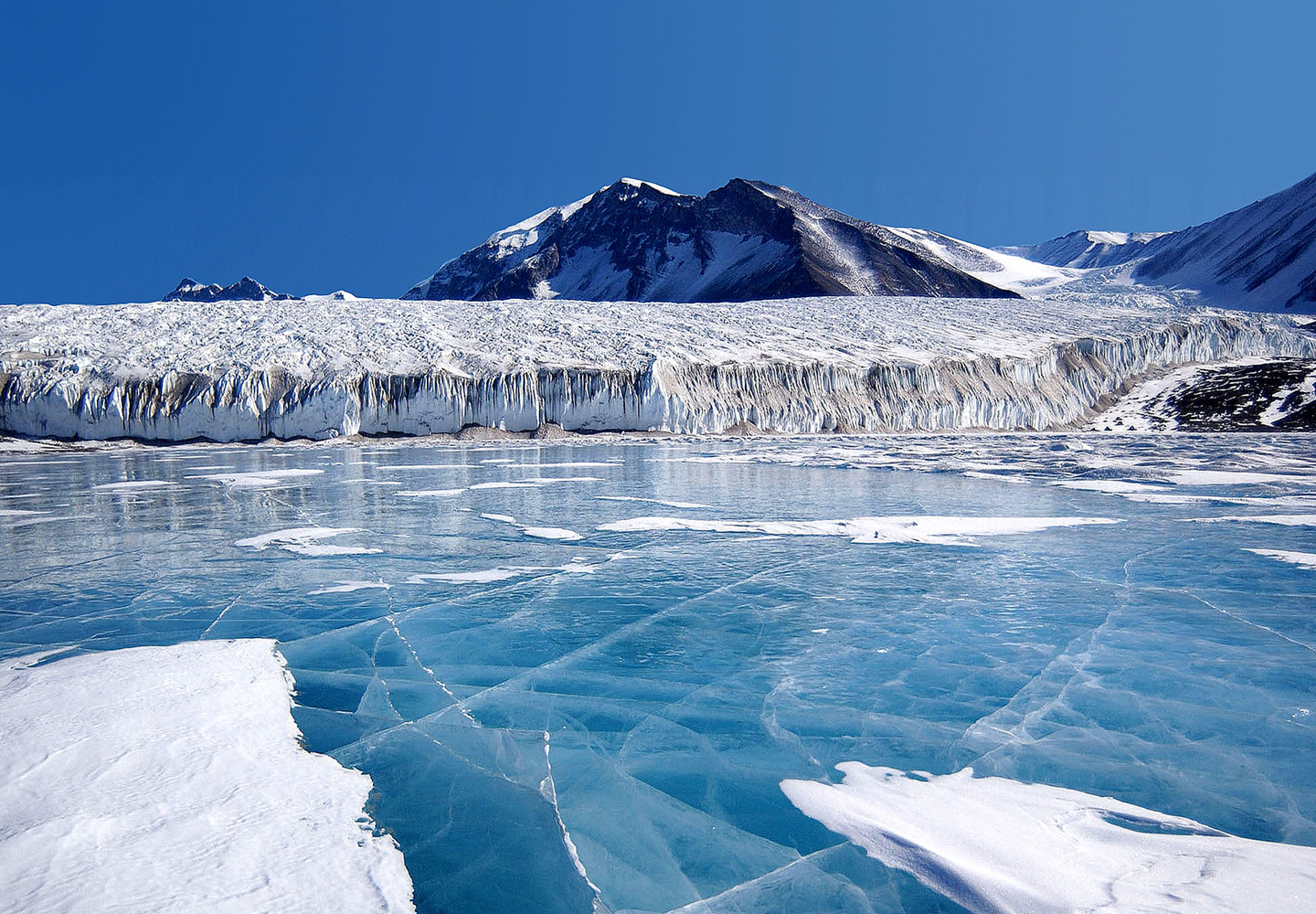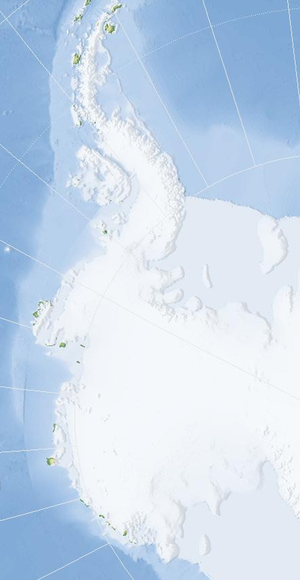Exploring Lake Ellsworth
Interview with
Martin - Lake Ellsworth is at the bottom of the west Antarctic ice sheet. It is underneath about three kilometres of ice. The lake is roughly ten kilometres long, two or three kilometres wide and the water depth of it is about 150 metres. So it's like a rather large Scottish loch under the ice of west Antarctica.
Richard - Why is it water?
Martin - Very simple - the background geothermal heating is all you really need to get the ice temperature to be at the pressure melting point beneath about three kilometres.
Richard - So that's heat from the rock?
Martin - Yes, it's not unusual geothermal heating, it's just background levels of geothermal heat that you get everywhere on the planet and that's sufficient to warm the ice to the level that it will melt, and it's expected in Antarctica. We know of about 400 subglacial lakes that are located in various parts of Antarctica. Lake Ellsworth is the one that we're investigating in the next few years.
Richard - Why is it so interesting?
 Martin - Well there's a number of things that we want to understand about subglacial lakes. It's been 15 years since a breakthrough paper highlighted the scientific interest in subglacial lakes being a place where life might exist - unusual microbes in a very extreme environment - and we're interested in understanding how life can survive in these places, what life exists in these places, whether it's thriving or whether it's on the edge of extinction, and also the sediments on the floors of subglacial lakes may give us very important information about past climate change and ice sheet change in Antarctica.
Martin - Well there's a number of things that we want to understand about subglacial lakes. It's been 15 years since a breakthrough paper highlighted the scientific interest in subglacial lakes being a place where life might exist - unusual microbes in a very extreme environment - and we're interested in understanding how life can survive in these places, what life exists in these places, whether it's thriving or whether it's on the edge of extinction, and also the sediments on the floors of subglacial lakes may give us very important information about past climate change and ice sheet change in Antarctica.
Richard - So what are you planning to do?
Martin - Our plan is to access and sample the lake water and get samples of the sediment as well, and to do that is rather difficult because we have to get all the way through that three kilometres of ice in a very clean way without disturbing the lake unduly and getting those samples back to the surface where they can be treated and analysed in laboratories.
Richard - Because there might be life there, you don't want to contaminate it, and you want to ensure that if you find traces of it, it's from the lake and not something you've put in there?
Martin - Absolutely right. But science demands that we do things cleanly as well. We're very likely to be encountering very low concentrations of microbes and chemicals that we want to measure, and unless we keep the experiment really clean all we will do is measure the things we take down with us.
Richard - Now, Chris, it's your responsibility to make sure this happens?
Chris H. - That's right.
Richard - When we talk about drilling down, you're actually using hot water to drill?
Chris H. - That's correct. Traditional drilling techniques would have used some sort of drill corer but that takes a long time and hot water drilling is actually the cleanest, quickest and most efficient way of accessing the lake.
Richard - So what have we got here? I mean these really are big paddling pools. There are two of them set up at the moment and they're full of water and I think it's got quite a nice sound when you tap the side. These are the pools that you have hot water in to drill down?
 Chris H. - Kind of. What we need in order to undertake hot water drilling is a huge amount of water and of course there's loads of water in Antarctica - The problem is it's all solid! So the very first thing we need to do is to get together a large amount of snow in one place and start to melt it and that's what these pools are for - to melt some 90,000 litres of water to prime the drilling system to start drilling. Once we are drilling, there's no problem because as we're drilling down to the lake we are generating lots of melted snow which as we go which we can recirculate.
Chris H. - Kind of. What we need in order to undertake hot water drilling is a huge amount of water and of course there's loads of water in Antarctica - The problem is it's all solid! So the very first thing we need to do is to get together a large amount of snow in one place and start to melt it and that's what these pools are for - to melt some 90,000 litres of water to prime the drilling system to start drilling. Once we are drilling, there's no problem because as we're drilling down to the lake we are generating lots of melted snow which as we go which we can recirculate.
Richard - The drill's really a jet of water at the end of these giant hose reels which you've got trailing across the field here?
Chris H. - In simple terms, the system is really straightforward. We take this melted snow on the surface and the first thing we do is filter it. Then the next thing we do is heat it through a very clean boiler system up to approximately 97 degrees Celsius. We then run it through a bank of high pressure pumps and then, basically, push this water through a very long hose, a 3.4 kilometre hose, which has a jet nozzle on the end which just allows us to melt through the ice at an incredibly fast rate.
Richard - Martin, you've got your hole, what do you then do?
Martin - We have two items that we'll send down. One is a probe which has sample chambers on it and that will be lowered down the water column taking measurements. As it does so, it will scrape the sediments on the floor of the lake and it will take samples as it comes up and we will take that back to the surface and bring them back to the laboratories. The next thing we will do is put a coring device in which we can take a three-metre core of the sediments from the floor of the subglacial lake and transport it back to the laboratories.
Richard - It sounds to me almost like a space mission!
Martin - It's also another analogy to space science that the experiment that we conduct in Lake Ellsworth at some stage in the future may well be done on Europa, which is an ice covered moon of Jupiter with an ocean underneath it. People speculate that there may be life on Europa. To test that hypothesis will require more or less the experiment that we're going to do in Antarctica. It's maybe 20, 30, 50 years away, but we're very keen in Lake Ellsworth to make sure that we're documenting everything that we do so that in some stage in the future, if people want to learn how we did this experiment, it will be available to them.










Comments
Add a comment